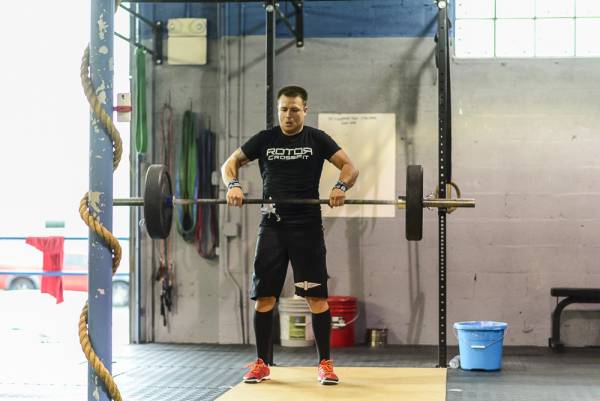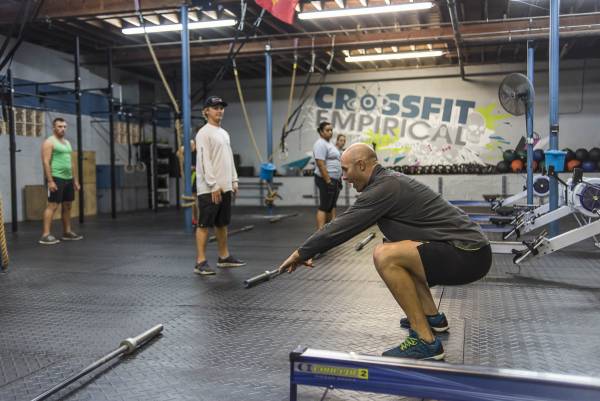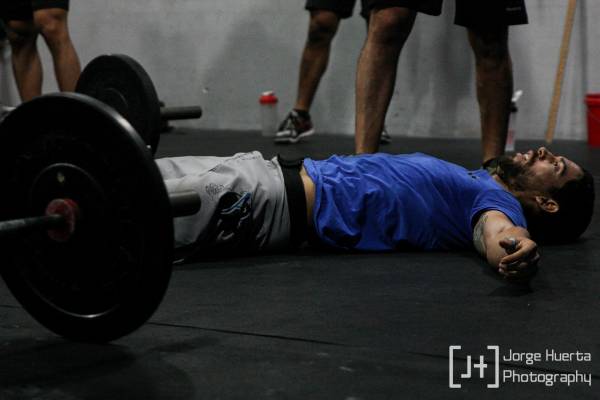When it comes to weight training, I see too many white belts practicing black belt techniques. What exactly do I mean by that?
In traditional martial arts, there is a series of skills associated with a given belt. This is the syllabus. Each belt builds on the foundation of the previous one. This syllabus is in place is so that the student becomes technically proficient at the basics, in order that more advanced techniques can be developed. The syllabus also serves to deepen the understanding of the techniques, so a higher level of performance can be achieved.
How Does This Relate to Lifting?
It’s not uncommon to see a new fad in lifting permeating throughout gyms up and down the country. For example, bands and chains (as a powerlifting friend of mine often jokes, “Because every lift is made better with bands and chains right?”), deficits, or partial movement training. Or even blocks or functional isometrics, not to mention weighted hip bridges.
Don’t get me wrong, these things have their place in a well-thought out and structured training program. What I am against is the copycat urge to throw these things into a program at random without any form of reasoning. Often, a fad is incorporated simply because someone else is doing it, because it seems to solve a problem similar to yours, or because it looks cool.
The Importance of a White Belt Mindset
Stop right there. That is an example of a novice (white belt) attempting more advanced (black belt) techniques without a solid foundation or a deep understanding. While you may get away with this approach for a while, sooner or later you will come unstuck.
There could be a number of reasons that you are struggling and your numbers have hit a ceiling. Keep an open mind. See if you have exhausted the full potential of the avenues below before attempting to exploit the benefits of more advanced lifting techniques.
Problem: Technically Inefficient
I often see people miss lifts not because they are not strong enough, but because they are technically inefficient. This doesn’t just apply to the more complex Olympic style lifts. It can also apply to what I call the foundation lifts – bench, deadlift, squat, and overhead press.
“If you don’t have these basics in check, it doesn’t matter if you use advanced lifting techniques. You’ll still carry these glaring faults with you and your problem will remain.”
Solution
Seek quality coaching and feedback. This can save you needless wasted hours in training. You’d be surprised the difference subtle changes, such as adjusting your stance an inch here or your grip an inch there, can make to your strength output. Then there’s bar placement, breathing, I could go on – and these are just a few of the basics. If you don’t have these basics in check, it doesn’t matter if you use advanced lifting techniques. You’ll still carry these glaring faults with you and your problem will remain.

If you don’t have access to quality coaching, I suggest you film each set. Then review the lift yourself. Sometimes what we think we look like and what we are actually doing are two different things.
From here, evaluate what worked and what you need to adjust. Do this critically, and aim to improve each set. If you are not confident in your ability to assess your technique, consider sending the video to someone you trust for feedback.
Problem: Limited Range of Motion (ROM)
Maybe you’re missing the lift because your range of movement sucks. You don’t need the flexibility of a new-age yogi, but you do need the ability to move through the lift’s range of motion pain free and without putting your mortality in danger (or that of your spotters).
“Sometimes what we think we look like and what we are actually doing are two different things.”
If you don’t have adequate range of motion, you may get away with it for a short while and at lighter weights. No doubt your lift will look ugly, but as soon as you start slapping on more iron, you and I both know that at some point something in your body will give.
If you continue heavy loading when your ROM is not on point, don’t be surprised when you hear things go snap, crackle, and pop in your training session. I can tell you that when I addressed my hip mobility and range of motion in my ankle, my squat weights drastically improved.
Solution
Sometimes your technical inefficiency is due not to lack of skill, but factors that affect your range of movement, such as structural integrity of the joint or soft tissue pliability.

Contrary to popular belief, soft tissue management and joint mobility should be part of your programming, and not an afterthought. We were born to move. It’s why we were given joints. How basic is that? But it’s often overlooked.
Incorporate some form of flexibility training and soft tissue care into your daily routine. There are plenty of inexpensive products on the market to aid in self massage and soft tissue release, all of which can serve to improve your recovery and range of motion when performed frequently.
“We were born to move.It’s why we were given joints. How basic is that? But it’s often overlooked.”
If you can, it’s worth getting treated by a sports massage or manual therapist on a regular basis. How often depends on your training loads and frequency, how your body responds, and how much self-care you are incorporating into your daily routine. I recommend at least every three to four weeks to my athletes and clients.
Problem: Stuck at a Plateau With Your Lifting Numbers
Your technique is acceptable, and your mobility and flexibility are fit for purpose, yet you’re hitting a plateau with your lifts. It’s frustrating I know. You’re going hard in training, your dedication is never in question, but you are not getting the results you should be.
Ask yourself these questions:
- Are you going too heavy too often?
- Have you given your program long enough to work?
- Are you giving yourself enough time to recover between sessions?
- What’s your nutrition like?
Solution
Based on those questions, this situation is pretty easy to remedy. Lifting too heavy or with too much training volume could be a reason for your lifts stalling. Linear progression is not infinite. If your body is unable to adapt neurologically or biologically, the training stimulus will shift from eustress (positive stress) to distress (negative stress).

I’m not going to get into a debate about overreaching or overtraining. The simple fact of the matter is, if you are lifting too heavy too often and your numbers are static or even regressing, you’ve messed up.
Not to worry. This can be remedied. Simply deload to around 40 -50% for a week or two. Alternatively, take that time off training all together (but stay mobile), then start lifting again at a lower percentage and build your way back up. This is where a well-structured, periodised program can help you.
“If your body is unable to adapt neurologically or biologically, the training stimulus will shift from eustress (positive stress) to distress (negative stress).”
And what’s your nutrition like? If you are not giving your body the nutrients it needs to repair and build after each demanding session, it’s likely you will see a degradation of your performance over time. It’s that simple.
Conclusion
If you have all these bases covered in your white belt lifting syllabus, and your lifting needs a little edge, by all means sprinkle your program with more advanced techniques. Just make sure you understand what you are doing and why you are using these techniques.
Check out these related articles:
- 5 Basic Training Principles You Need to Revisit
- Are You A White or Black Belt?
- 3 Basic Drills to Improve Your Strength and Movement
- What’s New on Breaking Muscle UK
Photos 1 courtesy ofDavid Brown Photography.
Photos 2 & 3 courtesy ofCrossFit Empirical.
Photo 4 courtesy ofJorge Huerta Photography.






